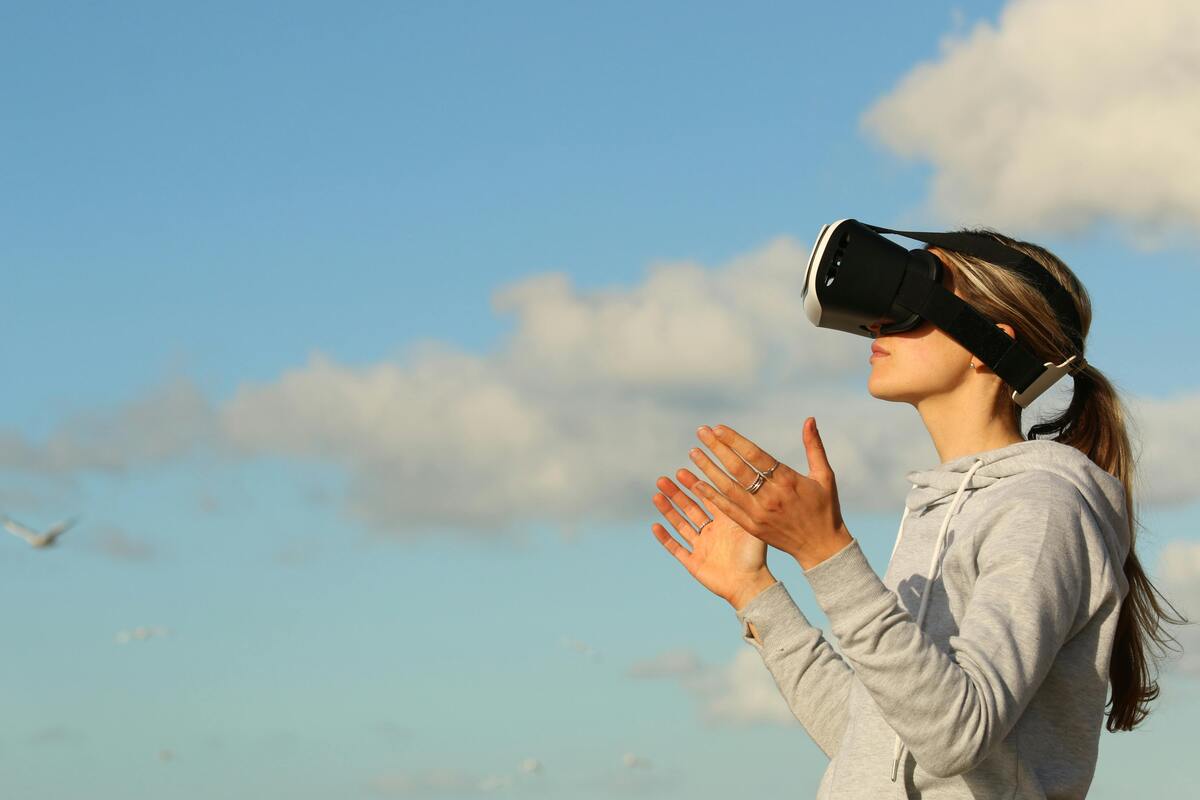In events, exhibitions, and conferences, the use of innovative technologies such as Extended Reality (XR) is transforming the customer experience. By combining the physical world with immersive digital environments, these tools offer unique ways to attract attention, create impact, and differentiate in a competitive marketplace.
What is Extended Reality and how does it fit into an event?
Extended Reality (XR) comprises three main technologies:
- Virtual Reality (VR): This is where the user is transported into a fully digital world through a special pair of glasses. For example, you can walk through an event without leaving your home. It is ideal for simulations or experiences that need to be isolated from the real world.
- Augmented Reality (AR): Adds digital elements such as images or text to the real world, visible through AR glasses or smartphones. It is ideal for trade shows and exhibition stands as it enhances customer perception without disconnecting them from their environment.
- Mixed Reality (MR): Combines the features of VR and AR, allowing users to interact with digital elements that appear to be integrated into the real world. For example, at an event, a virtual product can be 'placed' on a real table, providing a tangible and memorable interaction.
These technologies have a key advantage: they not only surprise but also create an emotional impact and drive greater customer engagement.
Examples of XR applications at events and exhibitions
1. Interactive booths and immersive experiences
Extended reality transforms traditional exhibition stands into dynamic and interactive platforms. Augmented reality allows visitors to see the inner workings of a product or interact with 3D models in real-time. Virtual reality allows brands to transport attendees to remote environments, such as factories or architectural projects, without leaving the event. CES 2022: LG turns its entire booth into augmented reality, here's how it works
2. Virtual simulations
During a convention, attendees can participate in product or service demonstrations in a virtual environment that immerses them in the experience. https://www.grupotiempoactivo.com/wp-content/uploads/2018/01/Rafting-Expojove.mp4?_=1
https://www.grupotiempoactivo.com/wp-content/uploads/2018/01/Windsurf.mp4?_=2
3. Gamification
Gamification, powered by XR, adds a playful component to events. For example, attendees can participate in a mixed-reality game to learn about a product, earning points that can be converted into real or virtual prizes. This increases active interaction and visitor retention. Gamification at events and trade fairs: 'Virtual Pisa Uvas', personalized interactive tables and screens.
The benefits of augmented reality in the customer experience:
- Increased immersion and emotional impact.
Extended reality not only creates a 'wow' effect but also increases the likelihood of recall. A customer who has an immersive experience is more likely to remember the brand or event and share their experience, creating a 'wow' effect in terms of communication. If this experience includes elements of sensory marketing, the emotional connection is further enhanced.
- Real-time personalization
With XR, each attendee can have an experience tailored to their interests. For example, at a technology event, someone interested in health could explore innovative medical applications, while someone interested in education could explore new interactive learning tools.
- Data generation
XR tools allow you to measure attendee behavior, helping you to evaluate the success of the event and plan improvements for future editions. In the age of data, this type of information is invaluable in tailoring the event experience for attendees.
- Competitive differentiation
Embracing these technologies gives brands an edge by positioning them as innovative companies. In an industry where competition is fierce and differentiation is a valuable intangible, incorporating technology into proposals is a significant advantage.
Bottom line
Extended Reality represents a unique opportunity to revolutionize events and deliver personalized, memorable experiences. From interactive booths to immersive simulations, XR allows brands to connect with their customers in new and exciting ways. While there are challenges, the long-term benefits far outweigh the limitations, making XR a strategic investment for those looking to lead the way in creating innovative experiences.






